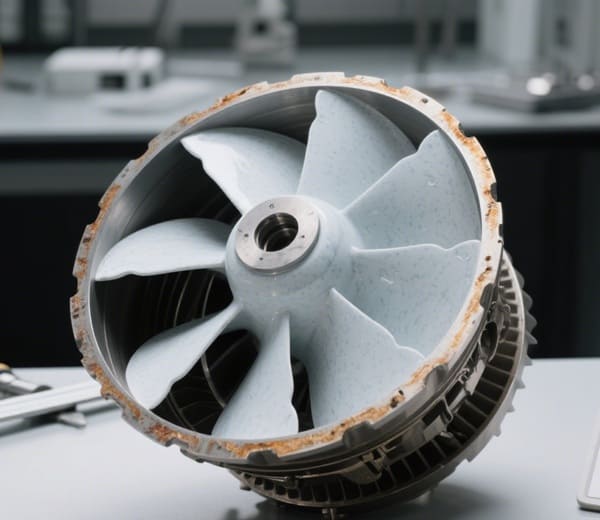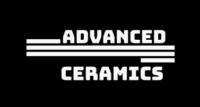The Advantages of Yttria Stabilized Zirconia (YSZ) Coatings in Aerospace Engineering
Yttria Stabilized Zirconia (YSZ) coatings have revolutionized the field of aerospace engineering. They serve as high-performance thermal barrier coatings (TBCs) that allow aerospace components to endure severe thermal, mechanical, and chemical environments. These coatings protect engine parts from oxidation and thermal fatigue, significantly enhancing fuel efficiency and service life.
Modern jet turbines can experience combustion temperatures exceeding 1500°C, far beyond the tolerance of metal alloys. Yttria Stabilized Zirconia (YSZ) coatings reduce heat transfer to underlying metals, enabling higher thrust-to-weight ratios, fewer cooling requirements, and improved overall engine performance. In this article, we’ll explore the mechanisms, applications, comparative advantages, and future trends of Yttria Stabilized Zirconia (YSZ) in aerospace systems.
At Advanced Ceramic Hub, we specialize in high-quality Yttria Stabilized Zirconia (YSZ) products, ensuring optimal performance for industrial and scientific applications.

What Is Yttria Stabilized Zirconia (YSZ)?
Yttria Stabilized Zirconia (YSZ) is a partially stabilized ceramic composed of zirconium dioxide (ZrO₂) doped with yttrium oxide (Y₂O₃). This doping stabilizes the metastable tetragonal and cubic phases, preventing undesirable transformations under thermal stress that would otherwise cause cracking or delamination.
| Property | Description |
| Chemical Formula | ZrO₂ + 8 mol% Y₂O₃ |
| Melting Point | > 2700°C |
| Thermal Conductivity | ~2 W/m·K (very low) |
| Phase Stability | Stable cubic/tetragonal phases at high temp |
| Ionic Conductivity | High – supports oxygen ion transport |
| Coefficient of Expansion | Compatible with Ni-based superalloys |
These properties make Yttria Stabilized Zirconia (YSZ) suitable for thermal barrier coatings in combustion chambers, turbine blades, and exhaust manifolds in both civil and military aircraft.
Explore our high-quality Yttria Stabilized Zirconia (YSZ) ceramic products.
How Do Yttria Stabilized Zirconia (YSZ) Coatings Function as Thermal Barriers in Aerospace?
Yttria Stabilized Zirconia (YSZ) functions as a high-temperature insulation layer, reflecting and dissipating thermal energy away from metal substrates. In gas turbines, this reduces metal temperatures by up to 150–200°C, enabling engines to operate at hotter core temperatures while preserving mechanical strength.
| Key Benefit | Impact on Aerospace Components |
| Low Thermal Conductivity | Reduces thermal load on base metals |
| Thermal Shock Resistance | Withstands rapid heating/cooling cycles |
| Oxidation Protection | Prevents scaling and chemical degradation |
| Heat Reflectivity | Minimizes heat transfer to alloys |
Yttria Stabilized Zirconia (YSZ) coatings thus extend component lifespan and reduce the need for frequent maintenance or part replacement.
What Is the Application Process for Yttria Stabilized Zirconia (YSZ) Coatings in Aerospace?
Several advanced deposition technologies are used to apply Yttria Stabilized Zirconia (YSZ), each offering different microstructures that affect coating performance. Proper choice of technique ensures adhesion, porosity control, and thermal cycling durability.
| Method | Microstructure | Applications |
| Plasma Spraying (APS) | Lamellar, partially porous | Turbine blades, stators, exhaust parts |
| EB-PVD | Columnar, strain-tolerant | Rotating blades, combustor liners |
| Sol-Gel | Fine-grained, thin layers | Sensors, electronics |
| SPS (Suspension Plasma) | Nano-structured coatings | Heat shields, advanced nozzles |
For example, EB-PVD coatings offer superior strain compliance, making them ideal for rotating components subject to intense vibration and expansion.
What Are the Advantages of Yttria Stabilized Zirconia (YSZ) Coatings in Aerospace Components?
- Yttria Stabilized Zirconia (YSZ) combines high-temperature resilience, mechanical durability, and chemical inertness, providing five essential benefits:
- Thermal shock resistance: Maintains microstructural integrity during rapid temperature swings.
- Chemical inertness: Resists oxidation, corrosion, and degradation even in hot gas streams.
- High fracture toughness: Reduces spallation risk under mechanical stress.
- Low thermal conductivity: Reduces heat transfer by over 90% compared to uncoated metals.
- Phase stability: Avoids volumetric change and cracking due to phase transformation.
| Property | Value / Impact |
| Thermal Conductivity | ~2 W/m·K → superior thermal insulation |
| Temperature Capability | >1200°C continuous → withstands hot sections |
| Compatibility with Superalloys | Matches expansion coefficients (e.g., Inconel) |
| Surface Hardness | High → erosion and wear resistance |
How Does Yttria Stabilized Zirconia (YSZ) Compare to Other Ceramic Coating Materials?
Yttria Stabilized Zirconia (YSZ) is often benchmarked against other ceramics such as alumina, mullite, and silicon carbide, which have applications in aerospace or industrial furnaces.
| Material | Thermal Conductivity | Max Operating Temp | Thermal Shock Resistance | Notes |
| Yttria Stabilized Zirconia (YSZ) | ~2 W/m·K | >1200°C | Excellent | Best for TBCs |
| Alumina (Al₂O₃) | ~25 W/m·K | ~1000°C | Moderate | Inexpensive, less efficient |
| Mullite | ~5 W/m·K | ~1400°C | Good | Chemically stable |
| SiC | ~120 W/m·K | >1600°C | Poor | High strength, poor insulator |
Yttria Stabilized Zirconia (YSZ)’s ultra-low thermal conductivity, coupled with phase stability and moderate cost, makes it the industry standard for thermal barrier coatings in high-thrust aerospace engines.
Request a custom quote for Yttria Stabilized Zirconia (YSZ) ceramic products.
What Aerospace Components Commonly Use Yttria Stabilized Zirconia (YSZ) Coatings?
Yttria Stabilized Zirconia (YSZ) coatings are applied in locations where exposure to extreme heat, velocity, and oxidation are frequent.
| Aerospace Component | Role of Yttria Stabilized Zirconia (YSZ) Coating |
| Turbine Blades | Insulation from hot gases and stress |
| Combustion Chambers | Thermal protection and chemical inertness |
| Exhaust Nozzles | Heat shielding and erosion resistance |
| Thrust Vector Nozzles | Prevents high-temp deformation |
| Spacecraft Shields | Reduces thermal loading during re-entry |
Yttria Stabilized Zirconia (YSZ) also finds roles in aerospace electronics, where it serves as an electrical insulator that withstands both vibration and heat.
What Are the Future Trends in Yttria Stabilized Zirconia (YSZ) Coating Development?
To meet the demands of next-generation hypersonic vehicles and ultra-efficient jet engines, R&D is focusing on the following:
| Trend | Advantage |
| Nano-engineered Yttria Stabilized Zirconia (YSZ) | Higher fracture resistance, lower density |
| Functionally Graded Coatings | Better thermal matching, less delamination |
| Doped Yttria Stabilized Zirconia (YSZ) Systems (e.g. CeO₂) | Improved sintering resistance |
| Digital Twin Modeling | AI-optimized deposition and prediction |
These innovations aim to increase component operating temperatures to 1600–1800°C, reduce thermal fatigue, and improve material sustainability.
FAQ
| Question | Answer |
| Why not use pure zirconia? | Unstable at high temp — yttria stabilizes phase |
| Can Yttria Stabilized Zirconia (YSZ) coatings be repaired? | Yes, via plasma reapplication or EB-PVD patching |
| What is the typical coating thickness? | 100–300 µm, depending on application |
| Is Yttria Stabilized Zirconia (YSZ) safe for the environment? | Inert in solid form; environmentally non-reactive |
| What are typical service lifespans? | 2,000–5,000 hours in turbine environments |
| Can Yttria Stabilized Zirconia (YSZ) be used in reusable spacecraft? | Yes, especially in re-entry protection systems |
| Does Yttria Stabilized Zirconia (YSZ) degrade over time? | Slight sintering may occur, but coatings remain stable for thousands of cycles |
Conclusion
Yttria stabilized zirconia is not just a material—it’s a cornerstone of modern aerospace engineering. Its low thermal conductivity, structural stability, and high-temperature tolerance make it essential in the construction of efficient, high-thrust, and safe flight systems. As airframes evolve toward higher altitude and velocity operations, the adaptability and customizability of Yttria Stabilized Zirconia (YSZ) coatings will ensure their continued dominance in the aerospace materials landscape.
Whether in next-gen jet engines, reusable spacecraft thrusters, or future hypersonic missiles, Yttria Stabilized Zirconia (YSZ) is enabling the future of aerospace propulsion. With continuous advancements in microstructure design, deposition technology, and AI-assisted modeling, the performance envelope of this ceramic coating will only expand further in the coming decades.
Looking for high-quality Yttria Stabilized Zirconia (YSZ) ceramic products? Contact us today!
